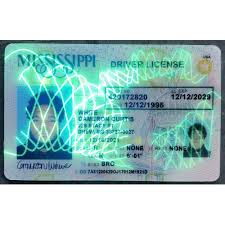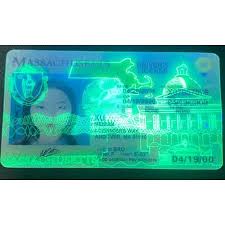scannable ids
Outline of the Article
- Introduction
- Importance of Scannable IDs
- Overview of Scannable IDs in the Modern World
- What Are Scannable IDs?
- Definition and Basic Concept
- Different Types of Scannable IDs
- The Technology Behind Scannable IDs
- How Scannable IDs Work
- QR Codes vs. Barcodes vs. RFID Tags
- The Evolution of Scannable ID Technology
- Applications of Scannable IDs
- H2: Everyday Uses
- H3: In Retail and E-commerce
- H3: Travel and Transportation
- H3: Healthcare and Pharmaceuticals
- H2: Security and Authentication
- H3: In Access Control
- H3: Digital Identity Verification
- Benefits of Scannable IDs
- Speed and Efficiency
- Enhanced Security
- Cost-Effectiveness
- Challenges and Concerns
- Privacy Issues
- Risk of Fraud
- Dependence on Technology
- The Future of Scannable IDs
- Technological Innovations
- Integration with AI and Blockchain
- The Potential for Universal Scannable IDs
- Conclusion
- Summary of Key Points
- Final Thoughts on the Importance of Scannable IDs
- FAQs
- How secure are scannable IDs?
- Can scannable IDs be hacked?
- Are scannable IDs replacing traditional IDs?
- What should I do if my scannable ID is not working?
- How will scannable IDs evolve in the future?
Scannable IDs: The Future of Identification and Security
Introduction
In today's fast-paced digital world, scannable IDs have become an integral part of our daily lives. Whether you're checking into a flight, buying groceries, or accessing secure locations, scannable IDs streamline these processes, making them quicker and more efficient. But what exactly are scannable IDs, and why are they so crucial in modern society? In this article, we'll dive deep into the world of scannable IDs, exploring their technology, applications, benefits, and the challenges they pose.
What Are Scannable IDs?
Scannable IDs are digital or physical forms of identification that can be read by electronic devices such as scanners or smartphones. These IDs contain encoded information that can be quickly accessed and verified by simply scanning them. The most common forms of scannable IDs include QR codes, barcodes, and RFID (Radio Frequency Identification) tags.
The Technology Behind Scannable IDs
The core technology behind scannable IDs revolves around encoding information into a format that can be easily read by a machine. Let's take a closer look at the different types:
QR Codes: These are square-shaped codes that can store a significant amount of information. When scanned, a QR code can lead to a website, provide contact details, or even store a ticket for an event.
Barcodes: Typically seen on products in retail stores, barcodes are linear codes that represent data in a machine-readable format. Barcodes are mainly used for tracking inventory and sales.
RFID Tags: Unlike QR codes and barcodes, RFID tags use radio waves to transmit data. These tags can be read from a distance without the need for direct line-of-sight, making them ideal for tracking objects and managing access control.
Over the years, scannable ID technology has evolved, becoming more sophisticated and secure. The shift from simple barcodes to complex QR codes and RFID tags represents the growing demand for more reliable and versatile identification methods.
Applications of Scannable IDs
Scannable IDs are everywhere, from the grocery store to the airport. Here's a breakdown of their most common uses:
Everyday Uses
In Retail and E-commerce: Scannable IDs like barcodes and QR codes are extensively used in retail for inventory management, pricing, and sales tracking. They also play a crucial role in e-commerce, where QR codes are often used for quick payments and product information.
Travel and Transportation: Airlines and public transport systems have embraced scannable IDs for ticketing and boarding processes. Digital boarding passes and train tickets often come in the form of QR codes, making travel more convenient.
Healthcare and Pharmaceuticals: In the healthcare industry, scannable IDs are used to track patient records, medication, and equipment. This ensures that the right patient gets the right treatment and reduces the chances of errors.
Security and Authentication
In Access Control: Scannable IDs are widely used in access control systems, where employees use RFID badges or QR codes to enter secure areas. This technology is also used in schools, offices, and government buildings.
Digital Identity Verification: Online services and apps often use scannable IDs for identity verification. For example, a QR code might be used to confirm your identity when logging into a secure website or app.
Benefits of Scannable IDs
Scannable IDs offer numerous advantages, making them an attractive option for various industries:
Speed and Efficiency: Scannable IDs drastically reduce the time it takes to verify information. Whether it's scanning a boarding pass at the airport or checking a product's price at a store, the process is quick and seamless.
Enhanced Security: By encoding data that can only be accessed by authorized devices, scannable IDs provide a higher level of security compared to traditional IDs. This is especially important in sectors like finance and healthcare.
Cost-Effectiveness: Implementing scannable IDs can lead to significant cost savings. For instance, using RFID tags for inventory management can reduce losses and improve accuracy, ultimately saving money.
Challenges and Concerns
Despite their many benefits, scannable IDs are not without challenges:
Privacy Issues: With the growing use of scannable IDs, concerns about privacy have emerged. The ability to track individuals and collect data through these IDs raises questions about how this information is used and who has access to it.
Risk of Fraud: While scannable IDs are designed to be secure, they are not immune to fraud. Hackers can potentially clone or manipulate these IDs, leading to unauthorized access or identity theft.
Dependence on Technology: Scannable IDs rely heavily on technology. If the system fails or the device used to scan the ID malfunctions, it can cause significant disruptions.
The Future of Scannable IDs
As technology continues to advance, the future of scannable IDs looks promising. Here are a few trends to watch:
Technological Innovations: We can expect to see more advanced forms of scannable IDs, such as those integrated with biometrics or smart devices. These innovations will make identification even more secure and convenient.
Integration with AI and Blockchain: The combination of AI and blockchain technology with scannable IDs could revolutionize how we verify identities and manage data. AI can enhance the accuracy of scans, while blockchain can provide a secure, tamper-proof ledger of transactions.
The Potential for Universal Scannable IDs: In the future, we might see the development of universal scannable IDs that can be used across different platforms and industries. This would simplify processes and reduce the need for multiple forms of identification.
Conclusion
Scannable IDs have undoubtedly transformed the way we live, work, and interact with the world around us. Their speed, efficiency, and security benefits make them invaluable in various industries. However, it's essential to address the challenges and concerns associated with their use, particularly regarding privacy and fraud. As we look to the future, the continued evolution of scannable IDs will likely bring even more exciting developments, further integrating them into our everyday lives.
FAQs
How secure are scannable IDs?
Scannable IDs are generally secure, but their level of security depends on the technology used. RFID tags and QR codes with encryption are among the more secure options.
Can scannable IDs be hacked?
While it's challenging, scannable IDs can be vulnerable to hacking if not properly secured. Encryption and secure transmission methods can reduce this risk.
Are scannable IDs replacing traditional IDs?
In many areas, scannable IDs are complementing or even replacing traditional IDs due to their convenience and security features.
What should I do if my scannable ID is not working?
If your scannable ID isn't working, check for damage or try using a different device to scan it. If the problem persists, contact the issuer for a replacement.
How will scannable IDs evolve in the future?
Scannable IDs are likely to become more advanced, incorporating new technologies like biometrics, AI, and blockchain to enhance security and usability.
 fake Montana ID
fake Montana ID
 fake Louisiana ID
fake Louisiana ID
 fake Missouri ID
fake Missouri ID
 fake New Jersey ID
fake New Jersey ID
 fake Mississippi ID
fake Mississippi ID
 fake Illinois ID
fake Illinois ID
 fake Connecticut ID
fake Connecticut ID
 fake Michigan ID
fake Michigan ID

